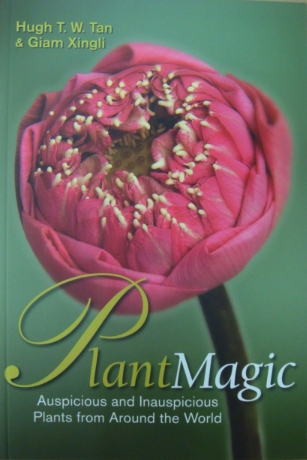On Mon 31 Oct 2016, “Plants in Tropical Cities” will be on sale at the discounted price of $48 and the special NUS Staff and Student price of $35 (show your NUS ID) at LT27, from 6.15pm to 7.00pm.
This is just before the Jerry Coyne’s “Why Evolution is True” talk (registration link).
On sale at $60 at Kinokuniya, this special discounted offer is being made by the book author Boo Chih Min (email: uvaria@hotmail.com) who was a botany student in NUS herself not too long ago! She is keen to teach out to students and is making this effort to make the book accessible to them. The 19 features on roadside plants, epiphytic plants, aquatic plants, mangroves, etc. will be especially useful to anyone starting out.
Plants in Tropical Cities
By Boo Chih Min, Sharon Y. J. Chew & Jean W. H. Yong
The Definitive guide for Plants in Singapore and the neighbouring countries.

With close to 2800 plants featured, we hope that this book will help everyone to appreciate all the plants around us in our daily lives. Nineteenth palettes or likely scenarios/situations (e.g. roadside plants, green roofs, green walls, epiphytic plants, aquatic plants, seashore planting, school gardens, mangroves, plants to attract butterflies, fragrant plants) were prepared that will be helpful for anyone embarking on any plant-related development projects or simply as a hobby. Not forgetting the scientific researchers and the graduate students for their plant identification needs, we put in as many botanical details as possible for each species, within the 1000 page limit! Additionally, an Index of Genus names for quick reference was also included at the back of the book.
The “A to Z” listing of plants gave us a chance to feature 26 photos, each of which is the representative” for each alphabet (based on the scientific name). Whenever possible, native species (to our Malesian region) and various plant functional groups (e.g. aquatic plants, epiphytes, mangroves, climbers) were featured throughout the book in our bid to promote better understanding of plant adaptations and also to protect our unique regional plant biodiversity. Plants in Tropical Cities managed to feature two-thirds of Singapore’s flora (ca 2800, including 650 native species; Singapore has ca 4100, with 2100 natives; exotics are ever increasing with new plant imports).
Read the review by retired NUS botany professor Wee Yeow Chin here.
View sample pages from the book here.











